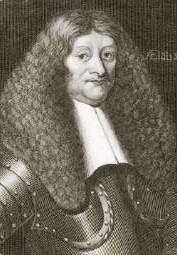Gell baronets
The Gell Baronetcy, of Hopton in the County of Derby, was a title in the Baronetage of England. It was created on 29 January 1642 for John Gell, Hopton Hall, Derbyshire, chief barmaster in the wapentake of Wirksworth from 1638–1644. The family gained importance and wealthy through their lead mining interests near Wirksworth. Sir John Gell, 1st Baronet received the baronetcy on the eve of the English Civil War, but fought for the Parliamentary side. The second and third Baronets both served as Members of Parliament for Derbyshire. The male line of the family became extinct on the decease of the 3rd Baronet in 1719. However, his nephew John Eyre (d. 1739) took the name of Gell upon inheriting the estate. His son, Philip Eyre Gell (1723–1795) may have built the Via Gellia to serve the family lead mines; another son, John Gell (1740–1806), became an admiral. Philip Eyre Gell had two sons, Philip Gell (1775–1842), who inherited the estate, and Sir William Gell (1777–1836), an antiquarian. Philip left only a daughter, Isabella, who died in 1878, ending the line.

The Via Gellia, a wooded valley road running from Wirksworth, was named after the Gell family, in mock Latin style. It is most likely that it was named after, or possibly by, Philip Gell (1723–1795), who was ultimately responsible for its construction.
Gell baronets, of Hopton (1642)
- Sir John Gell, 1st Baronet (1592–1671)
- Sir John Gell, 2nd Baronet (1612–1689)
- Sir Philip Gell, 3rd Baronet (1651–1719)
External Links
- D258 - Gell of Hopton Hall (the archive collection of the Gell family's documents is held by the Derbyshire Record Office).